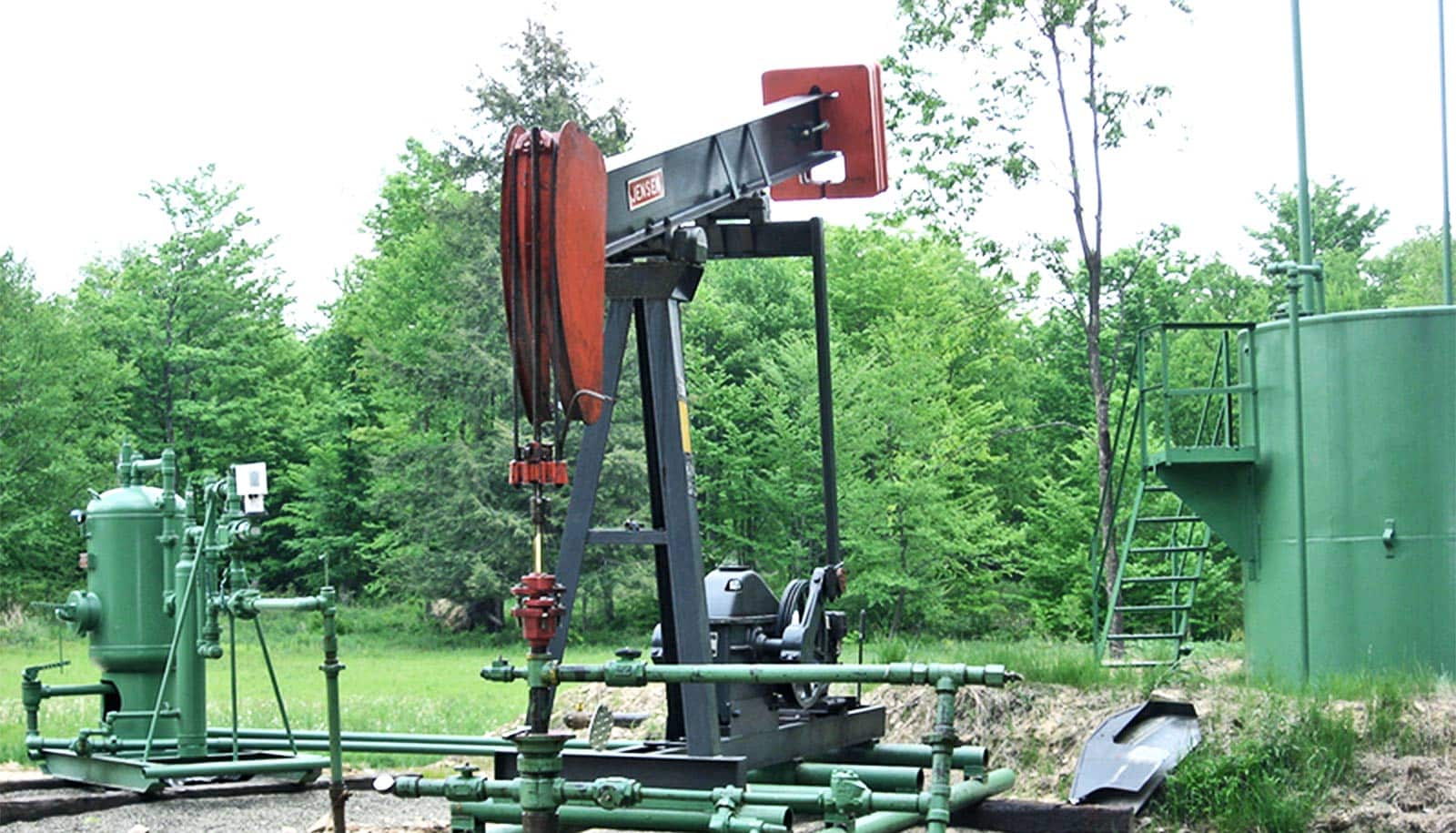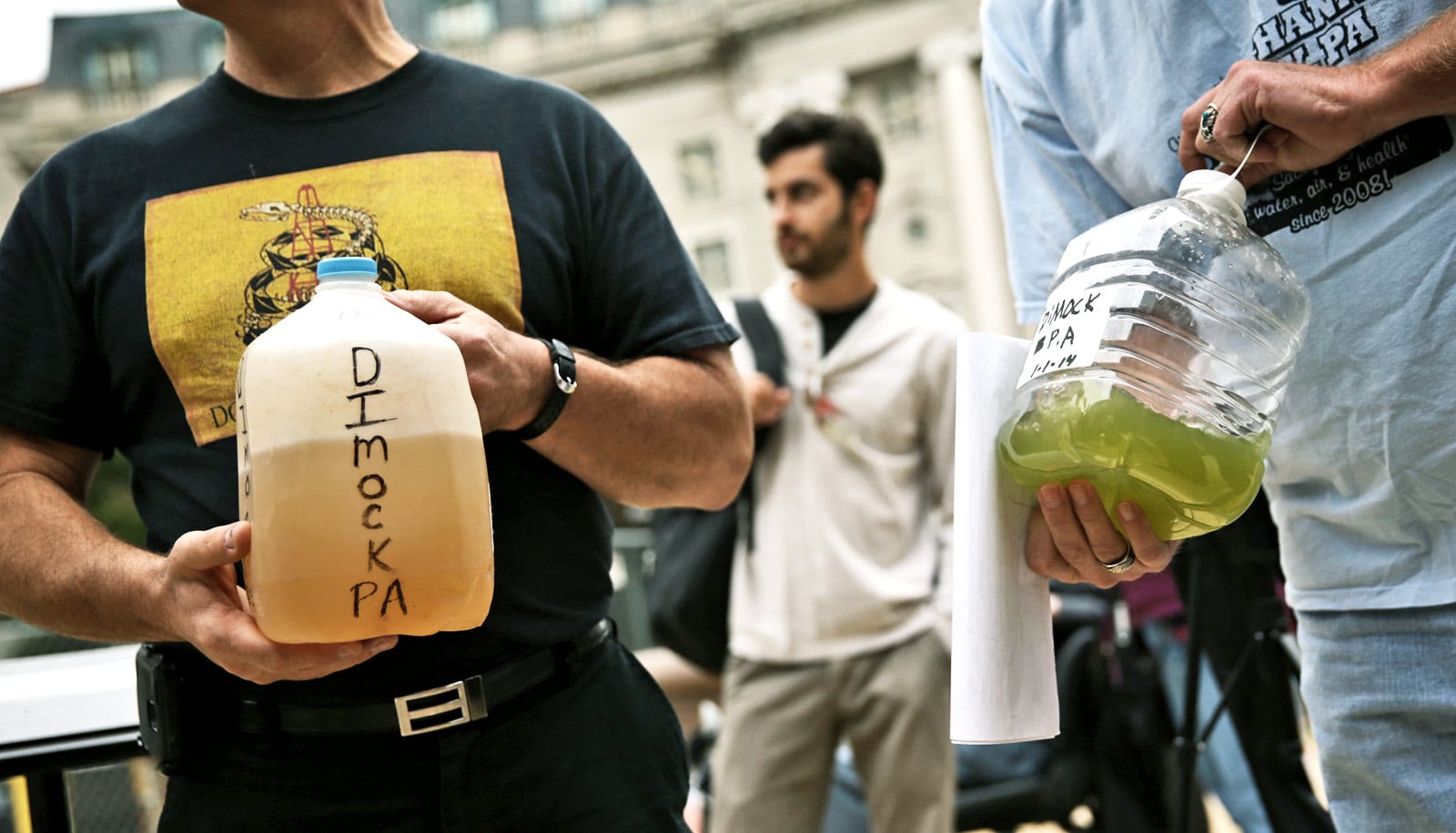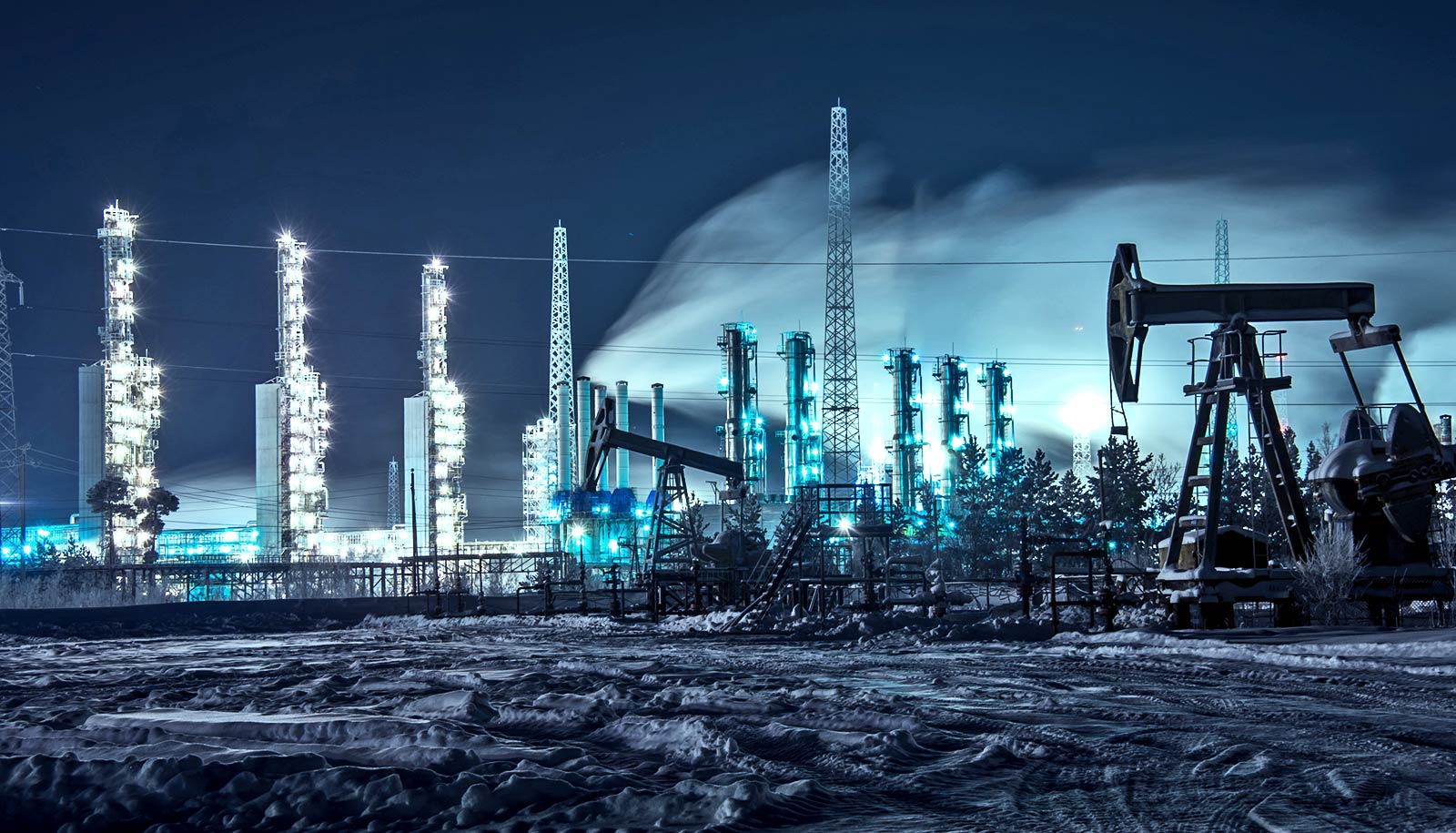Conventional oil and gas production activities inject much more water underground than fracking and other petroleum-production methods, according to a new study.
High-volume hydraulic fracturing, known as fracking, injects water, sand, and chemicals under high pressure into petroleum-bearing rock formations to recover previously inaccessible oil and natural gas. The method led to the current shale gas boom that started about 15 years ago.
Conventional methods of oil and natural gas production, which have been in use since the late 1800s, also inject water underground to aid in the recovery of oil and natural gas.
“If we want to look at the environmental impacts of oil and gas production, we should look at the impacts of all oil and gas production activities, not just hydraulic fracturing,” says Jennifer McIntosh, a professor of hydrology and atmospheric sciences at the University of Arizona.
“The amount of water injected and produced for conventional oil and gas production exceeds that associated with fracking and unconventional oil and gas production by well over a factor of 10,” she says.
Decades of monitoring
McIntosh and coauthor Grant Ferguson of the University of Saskatchewan, looked at how much water petroleum industry activities inject underground, how those activities change pressures and water movement underground, and how those practices could contaminate groundwater supplies.
While groundwater use varies by region, about 30% of Canadians and more than 45% of Americans depend on the resource for their municipal, domestic, and agricultural needs. In more arid regions of the United States and Canada, surface freshwater supplies are similarly important.
The researchers found there is likely more water now in the petroleum-bearing formations than initially because of traditional production activities.
To push the oil and gas toward extraction wells, the conventional method, known as enhanced oil recovery, injects water into petroleum-bearing rock formations. Saline water is produced as a by-product and is then re-injected, along with additional freshwater, to extract more oil and gas.
However, at the end of the cycle, the excess salt water is disposed of by injecting it into depleted oil fields or deep into geological formations that don’t contain oil and gas. That injection of waste water has changed the behavior of liquids underground and increases the likelihood of contaminated water reaching freshwater aquifers.
Some of the water injected as part of oil and gas production activities is freshwater from the surface or from shallow aquifers. That could affect groundwater and surface water supplies in water-stressed regions such as New Mexico or Texas, McIntosh says.
“There’s a critical need for long-term—years to decades—monitoring for potential contamination of drinking water resources not only from fracking, but also from conventional oil and gas production,” McIntosh says.
Saline water
McIntosh started wondering how the environmental impacts of hydraulic fracturing compare to the impacts of the conventional methods of oil and gas production—methods that have been in use for about 120 years and continue to be used.
Both fracking and conventional practices use groundwater and surface water when there isn’t enough water from other sources to continue petroleum production.
To see how all types of oil and gas production activities affected water use in Canada and the US, the researchers synthesized data from a variety of sources. However, the published scientific studies available covered only a few regions. Therefore, they also delved into reports from state agencies and other sources of information.
The researchers found information for the Western Canada Sedimentary Basin, the Permian Basin (located in New Mexico and Texas), the states of Oklahoma, California, and Ohio, and the total amount of water produced by high-volume hydraulic fracturing throughout the US.
“What was surprising was the amount of water that’s being produced and reinjected by conventional oil and gas production compared to hydraulic fracturing,” McIntosh says. “In most of the locations we looked at—California was the exception—there is more water now in the subsurface than before. There’s a net gain of saline water.”
Abandoned wells
There are regulations governing the petroleum industry with regard to groundwater, but information about what is happening underground varies by province and state. Some jurisdictions keep excellent data while for others it’s virtually nonexistent. Despite this, Ferguson says he and McIntosh can make some observations.
“I think the general conclusions about water use and potential for contamination are correct, but the details are fuzzy in some areas,” Ferguson says. “Alberta probably has better records than most areas, and the Alberta Energy Regulator has produced similar numbers to ours for that region. We saw similar trends for other oil and gas producing regions, but we need better reporting, record keeping, and monitoring.”
Oil and gas production activities can have environmental effects far from petroleum-producing regions. For example, previous studies show that operating disposal wells can cause detectable seismic activity more than 90 kilometers (just under 56 miles) away. Conventional activities inject lower volumes of water and at lower pressure but take place over longer periods of time, which may cause contamination over greater distances.
Another wild card is the thousands of active, dormant, and abandoned wells across North America. Some are leaky or were improperly decommissioned, providing possible pathways for contamination of freshwater aquifers.
While there is some effort to deal with this problem through organizations such as Alberta’s Orphan Well Association, there is little consensus as to the size of the problem. Depending on which source is cited, the decommissioning price tag ranges from a few billion to a few hundred billion dollars, Ferguson says.
A 2017 report from Canada’s CD Howe Institute indicates 155,000 unremediated wells in Alberta. A 2014 paper by other researchers suggests Pennsylvania alone has at least 300,000 abandoned wells, many of which are “lost” because there are no records of their existence nor surface evidence that an oil well was once there.
“We haven’t done enough site investigations and monitoring of groundwater to know what the liability really looks like,” Ferguson says “My guess is that some wells probably should be left as is and others are going to need more work to address migration of brines and hydrocarbons from leaks that are decades old.”
The research appears in the journal Groundwater. Global Water Futures funded the research.
Source: University of Arizona


